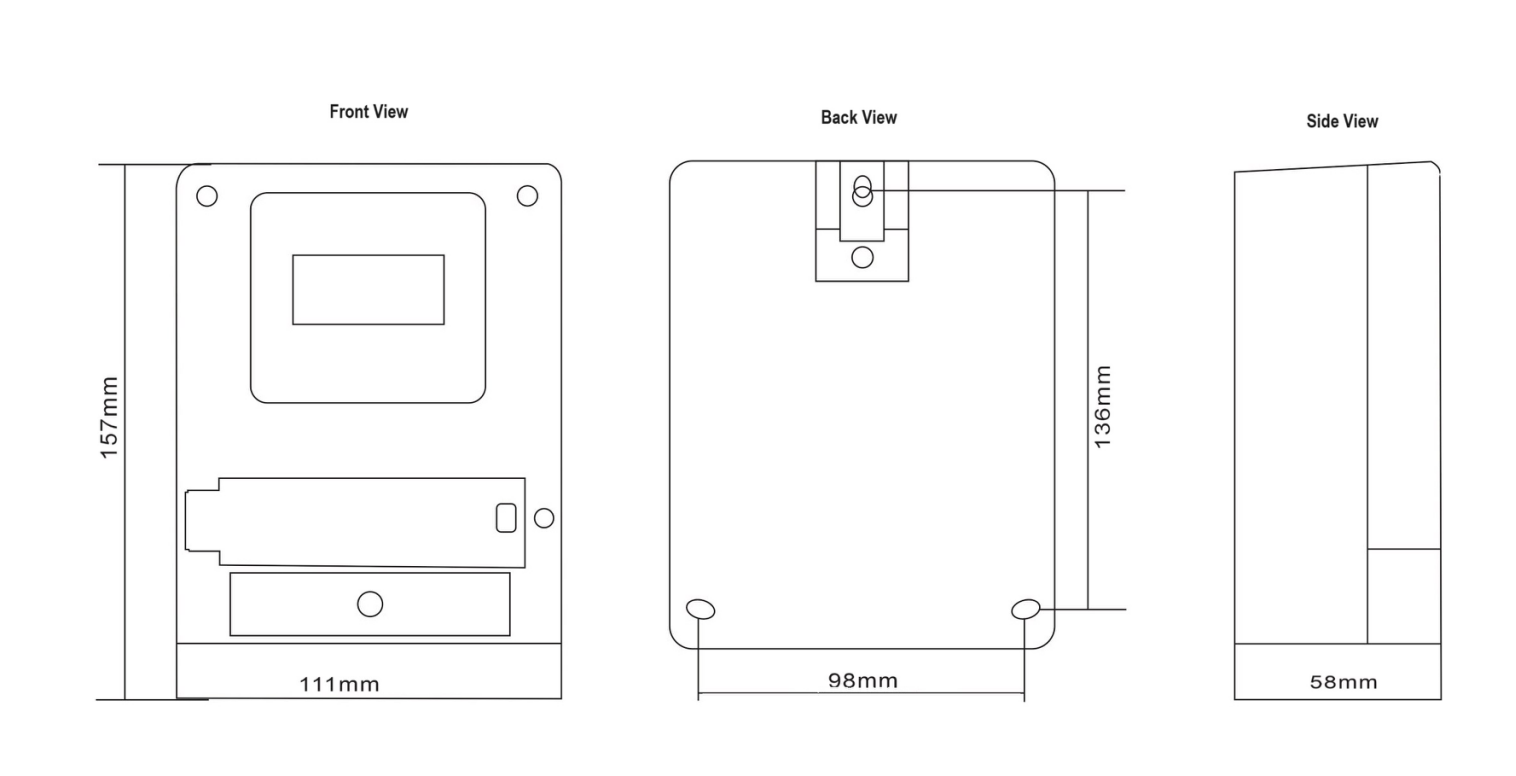- HOME
- ABOUT US
-
PRODUCTS
- Energy Meter
-
Power Transmission & Distribution
- Analog Meter
- Dehumidifier
- Wireless Temperature Meter and Sensor
- Fault Indicator
- High Voltage lndicator
- Electromagnetic Lock
- Relay
- Temperature and Humidity Control
- Fan
- Heater
- Lightning arrester
- Transformer
- Transmitter
- Fuse
- Breaker
- AC Contactor
- Intelligent Circuit Breaker
- Fire power detector
- Intelligent control
- Water Meter
- Fire Electric
- New Energy
- Home Terminal
- CONTACT US
- NEWS
- FAQ
Home
PRODUCTS
Energy Meter
Wall-Mounted Energy Meter
DDS5688-Single Phase Electronic LCD Energy Meter (double labelled)
PRODUCTS
DDS5688-Single Phase Electronic LCD Energy Meter (double labelled)
The single-phase wall-mounted IoT energy meter adopts the most advanced technologies available in the market, including dedicated integrated circuits for energy metering, microprocessors, non-volatile memory for data storage, wide-temperature LCD displays, and Surface Mount Technology (SMT) manufacturing processes. It is characterized by high precision, wide load range, high sensitivity, and low power consumption.
Product Description
digital panel meter
General
The single-phase wall-mounted IoT energy meter adopts the most advanced technologies available in the market, including dedicated integrated circuits for energy metering, microprocessors, non-volatile memory for data storage, wide-temperature LCD displays, and Surface Mount Technology (SMT) manufacturing processes. It is characterized by high precision, wide load range, high sensitivity, and low power consumption.
Designed to measure the AC active energy in single-phase power grids with a rated frequency of 50/60Hz, this meter integrates numerous functions, including forward and reverse active energy measurement, time-of-use energy metering, and real-time transmission of voltage, current, power, and power factor. It also supports prepaid functionality through smart energy platforms and flexible presetting of various automatic meter reading schedules. Information exchange between users and power supply departments is facilitated through PCs and handheld computers. The meter supports communication via RS485, NB-IoT, 4G, and other methods, enabling power departments to manage the IoT meter effectively.
Performance Standards:
- DL/T 645-2007 "Communication Protocol for Multi-Functional Energy Meters"
- DL/T 614-2007 "Multi-Functional Energy Meter"
- GB/T15284-2002 "Special Requirements for Multi-Rate Energy Meters"
- Q/GDW 355-2009 "Specification for Single-Phase Smart Energy Meter Types"
- Q/GDW 354-2009 "Functional Specification for Smart Energy Meters"
- Q/GDW 364-2009 "Technical Specification for Single-Phase Smart Energy Meters"
- Q/GDW sub-2009 "Information Exchange Security Certification Technical Specification for Smart Energy Meters"
- GB/T19582.1-2008 "Industrial Automation Network Specification Based on Modbus Protocol Part 1: Modbus Application Protocol"
1.1 Main Performance Characteristics:
- The meter's circuit design and component selection are based on large environmental tolerance, ensuring long-term stable operation. Its accuracy is minimally affected by frequency, temperature, and voltage variations. The meter is compact, lightweight, and features good sealing performance, significantly enhancing reliability compared to similar products. To facilitate standardized management by power supply departments, the meter is equipped with an error adjustment device.
- In the event of a power outage, environmentally friendly lithium batteries serve as backup power to prevent data loss. The calendar, clock, and time-of-use program control functions operate normally, automatically resuming operation upon power restoration. The meter's terminal box features an optoelectronic isolated pulse output interface for error testing or pulse collection, with the pulse output constant consistent with the meter's marked constant.
- Remote management and control functions utilize low-voltage power line carrier, RS485, NB-IoT, 4G, LoRa, and WiFi technologies to enable remote meter reading, settings adjustment, and control management.
Specification
|
Item |
Parameter |
|
Rated Operating Voltage |
Un 220V (70% - 120%) |
|
Single-phase Critical Voltage |
The energy meter can work at 60% (0.7Un or more communication, backlighting, pulling and closing the gate can work normally). |
|
Accuracy |
Class 1.0 |
|
Current |
1.5(6)A 、5(10)A 、5(20)A 、5(30)A 、10(40)A 、 |
|
Voltage Line |
Active and apparent power consumption is less than 1.5W, 10VA in non-communicating state; less than 3W, 12VA in communicating state. |
|
Current Line |
The apparent power consumption of the current line of the energy meter is greater than 1 VA at base current, reference temperature and reference frequency. |
|
Starting Current |
≦ 0.004Ib |
|
Submersible |
Logic anti-submersible function |
|
Pulse constant |
1600 imp/kWh |
|
Power LCD |
Display 0-999999.99kWh |
|
Clock Error |
<0.5s/d (23℃) |
|
Battery |
3.6V 1.2Ah (non-rechargeable) |
|
Working Environment |
-30 - 65°C / RH≤85% condensationless (/ No corrosive gas) |
Dimension

 English
English

















